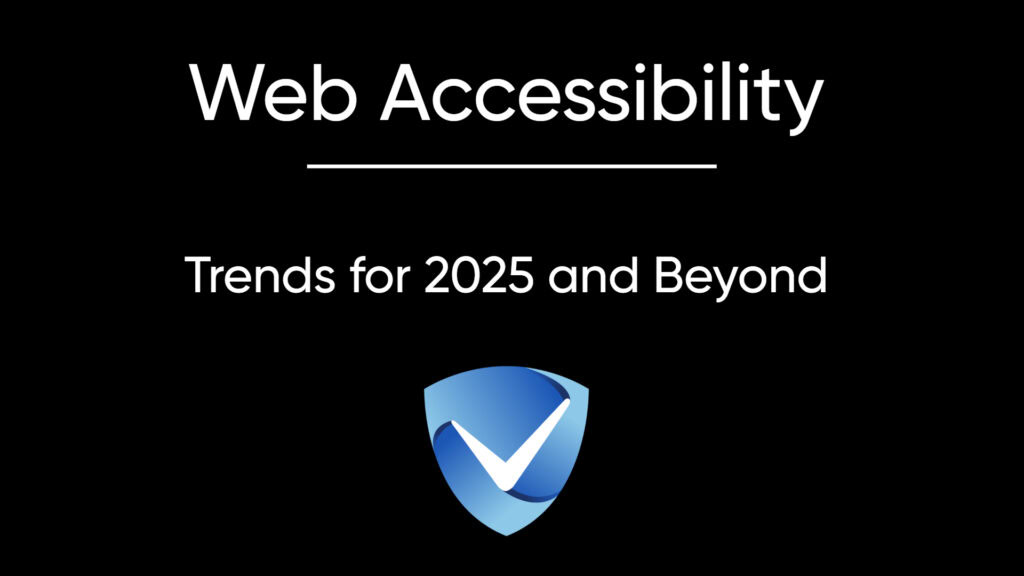Web Accessibility Trends
As the digital landscape continues to evolve, web accessibility has emerged as a critical component in the design and development of online content. The concept of web accessibility pertains to the practice of ensuring that websites and applications are usable by everyone, regardless of their abilities or disabilities. With an increasing number of individuals relying on digital platforms for daily tasks, the need for inclusive design is more pressing than ever. As we approach 2025, emerging technologies, legislative changes, and enhanced guidelines are poised to shape the future of web accessibility.
One of the primary drivers of web accessibility is the evolution of technology. Advances in artificial intelligence and machine learning have opened new avenues for creating more accessible web experiences. These technologies can enable automatic content adjustments based on user needs, serving individuals with diverse abilities more effectively. Furthermore, the rapid proliferation of mobile devices has prompted developers to adopt responsive design practices, making it essential for websites to cater to all user interfaces while adhering to accessibility standards.
Stricter legislation regarding digital accessibility has also become a significant trend. Many countries have begun enhancing their legal frameworks to ensure equal access to information and services provided online. The introduction of mandates and regulations calls for organizations to adopt best practices in web accessibility. Consequently, this legislative shift has prompted businesses to reassess their digital assets and prioritize inclusive design in their strategies.
Additionally, organizations are now prioritizing enhanced guidelines that advocate for clearer accessibility standards. Collaborations among industry stakeholders are fostering the development of comprehensive guidelines to bolster web accessibility, offering a standardized approach to implementing accessible practices. This collective effort reflects a broader recognition of the importance of inclusivity in the digital space and sets the groundwork for future trends that will be explored in detail throughout this post.
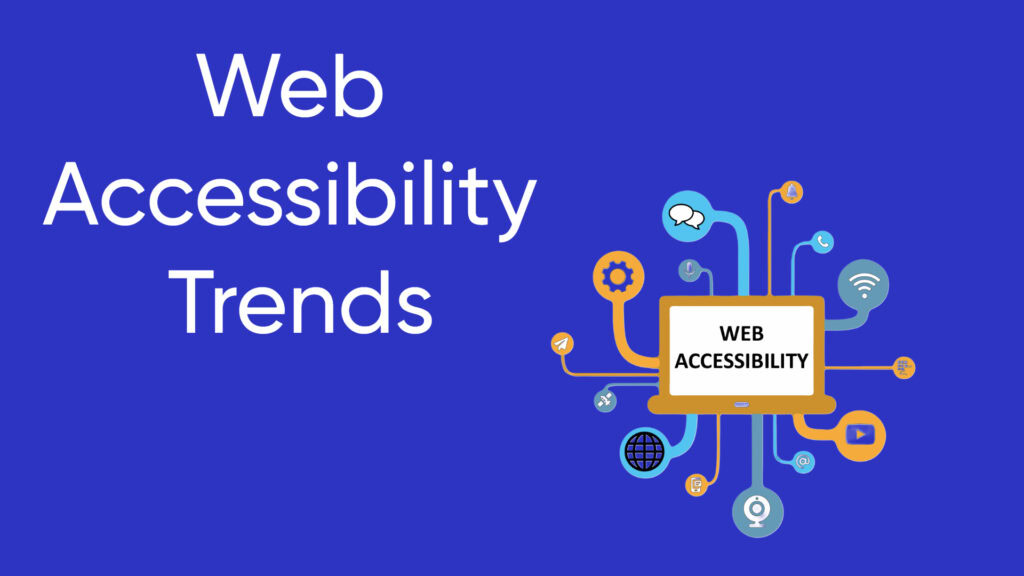
The Evolution of WCAG | From WCAG 2.x to WCAG 3.0
The Web Content Accessibility Guidelines (WCAG) have undergone significant transformations since their inception, with WCAG 2.x laying the groundwork for improved web accessibility. As technological advancements and user needs evolve, the introduction of WCAG 3.0 marks a pivotal moment in this journey. The new version not only builds upon the principles established in 2.x but also introduces several key enhancements aimed at addressing the needs of a diverse range of users, particularly those with cognitive disabilities.
One of the most notable changes is the flexible scoring model adopted in WCAG 3.0. Unlike the pass/fail structure of the previous versions, this model allows for a more nuanced understanding of accessibility compliance. Stakeholders can now assess how well a web page meets specific accessibility criteria, which ultimately encourages developers to focus on incremental improvements rather than striving for an absolute standard. This shift is particularly beneficial in facilitating user-centric outcomes, which consider the unique challenges faced by individuals with varying disabilities.
Moreover, WCAG 3.0 broadens its scope to encompass emerging technologies and digital environments, such as mobile applications and virtual reality. The guidelines are designed to address contemporary user interaction patterns, ensuring that accessibility measures are relevant across all digital platforms. This adaptability is crucial in the face of rapid technological change, solidifying the importance of accessible design as a fundamental aspect of web development strategies.
Finally, the user-centered approach taken in WCAG 3.0 emphasizes the experiences and needs of real-world users. By incorporating feedback from individuals with disabilities during the development process, the guidelines aim to create a more inclusive online experience. This evolution suggests that the future of web accessibility is not only about meeting standards but also about fostering an environment where all users can engage effectively with digital content.
AI-Driven Tools Enhancing Accessibility
The landscape of web accessibility is undergoing a significant transformation, largely driven by advancements in artificial intelligence (AI). These emerging technologies are not only improving the usability of websites for individuals with disabilities but also redefining the standards of web inclusivity. Central to this evolution are AI-driven tools that provide innovative solutions to common accessibility challenges.
One notable development is automated alt text generation. Through advanced image recognition algorithms, AI can analyze images and produce descriptive text automatically, making visuals accessible to users with visual impairments. This tool streamlines the process for web developers, allowing them to focus on content creation while ensuring that their websites remain compliant with accessibility guidelines. As AI continues to improve, the accuracy and relevance of these generated descriptions are expected to enhance, further benefiting users reliant on screen readers.
Another area where AI is making an impact is in real-time transcription for audio and video content. With the ability to transcribe spoken words instantly, these tools enable individuals with hearing impairments to access multimedia resources more easily. By providing synchronized subtitles and captions, AI enhances the overall user experience, making information more equitable across different formats and ensuring that individuals are not left behind due to accessibility barriers.
Additionally, personalized interfaces powered by AI can adapt to individual user preferences and needs. This technology analyzes user behavior and dynamically modifies the interface to offer a more tailored browsing experience. For instance, font sizes, color contrasts, and layout designs can be optimized based on individual requirements, resulting in a more inclusive digital environment. As AI-driven tools continue to develop, they hold the promise of making web content not only accessible but also enjoyable for all users, regardless of their abilities.
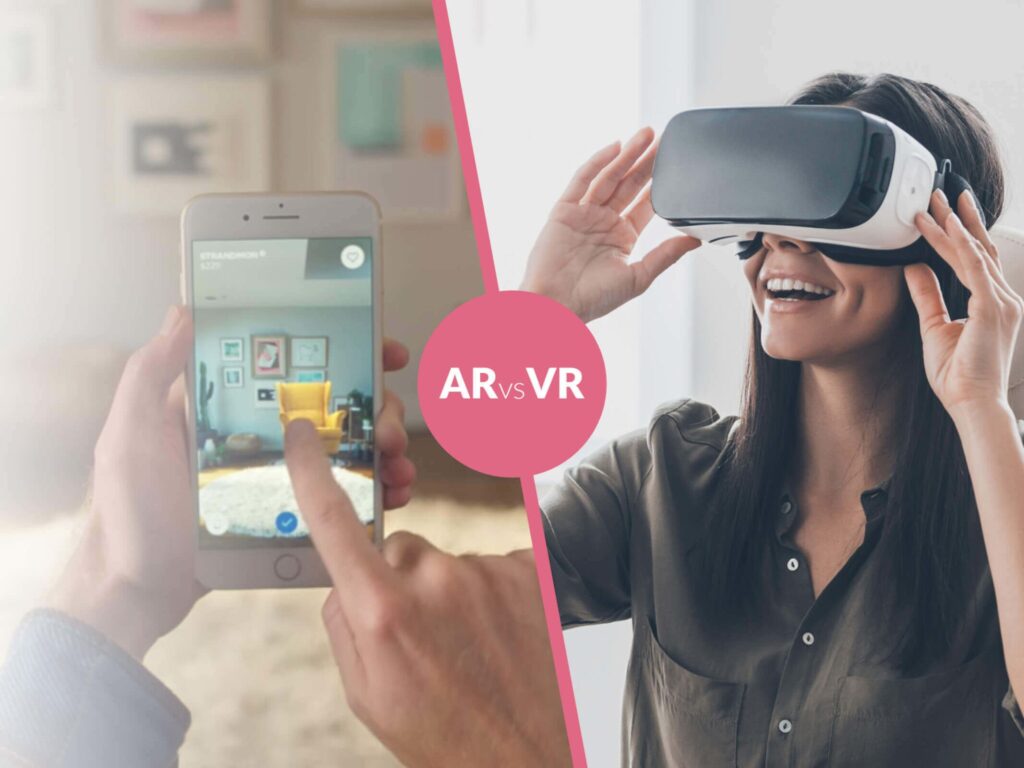
Augmented and Virtual Reality Opportunities and Challenges
As the adoption of immersive technologies such as augmented reality (AR) and virtual reality (VR) increases, their role in enhancing web accessibility emerges as a promising frontier. AR and VR can provide unique and innovative approaches to how users interact with digital environments, offering significant advantages for individuals with disabilities. In particular, these technologies can leverage spatial audio cues and haptic feedback to create more intuitive and accessible navigation systems.
Spatial audio cues can be instrumental in enhancing orientation and navigation within virtual spaces. By using directional sound, users can gain contextual awareness of their surroundings without relying solely on visual information. This is especially beneficial for individuals with visual impairments, as they can process and interpret virtual environments more effectively through auditory signals. Furthermore, the implementation of haptic feedback—vibrations or motions generated by a device—can assist in providing tactile information about the environment, guiding users through complex interfaces in a more immersive and engaging manner.
Another critical aspect of AR and VR accessibility is the emphasis on customizable interfaces. By enabling users to personalize their virtual experiences according to their specific needs and preferences, developers can create environments that are more inclusive. Customizable options may include adjustments in text size, color contrasts, or even the frequency and intensity of haptic feedback. Such flexibility not only promotes a sense of agency but also ensures that users can comfortably navigate the virtual world.
However, the integration of these immersive technologies into web accessibility does present various challenges. Designers and developers must ensure that AR and VR experiences are not only engaging but also aligned with established accessibility standards. There exists a necessity to carefully consider the diverse needs of users while avoiding the pitfalls of complexity and user overwhelm. Ensuring that immersive technologies remain inclusive and accessible requires ongoing collaboration between technologists and advocates for people with disabilities.
The Role of Voice Assistants and IoT in Accessibility
As we advance into the future, the role of voice assistants and the Internet of Things (IoT) is becoming increasingly significant in promoting web accessibility, especially for individuals with disabilities. Voice-controlled devices have emerged as powerful tools that enable users to navigate the digital landscape with ease, providing a comprehensive solution for those with motor impairments or other disabilities that hinder traditional input methods.
Natural language processing (NLP) has seen remarkable progress in recent years, enhancing the capabilities of voice assistants to understand and respond to a wide range of commands more effectively. This technology allows users to interact with various devices seamlessly by using verbal instructions rather than physical actions. For individuals with limited mobility, this hands-free navigation represents a considerable improvement in web accessibility, making it easier to access content, control smart home devices, and engage with online services.
The IoT landscape is significantly contributing to this trend by interconnecting a multitude of devices that can be controlled through voice-enabled interfaces. This expanded network of connected devices includes home appliances, thermostats, lighting systems, and even vehicles. Such advancements empower users to manage their physical environment conveniently and independently, fostering greater autonomy and enhancing their quality of life. For example, a person with mobility challenges can adjust their living space without needing to use their hands, simply by speaking to their voice assistant.
Furthermore, as industries integrate accessibility standards into their IoT solutions, users can expect consistent improvements in device usability and functionality. The combination of voice technology and IoT exemplifies a pivotal step in making digital platforms more inclusive, ensuring that individuals with disabilities are increasingly able to participate fully in various online activities. Ultimately, these innovations are converging to create a more accessible and accommodating web by leveraging the capabilities of voice assistants and smart technology.
Mobile Accessibility | A Key Focus Area
As the usage of mobile devices continues to dominate the digital landscape, mobile accessibility has emerged as a crucial focus area for developers and designers alike. The proliferation of smartphones and tablets has not only changed how content is accessed but has also necessitated the establishment of new guidelines, particularly concerning touch target sizes. These regulations aim to enhance usability for all users, including those with disabilities. Adhering to these size standards allows users to interact seamlessly with mobile applications and websites, reducing frustration and promoting a more inclusive environment.
The adoption of mobile-first design strategies is increasingly vital as the emphasis shifts towards providing optimal user experiences on smaller screens. This approach advocates for designing for mobile devices before scaling up to desktop versions, ensuring that accessibility considerations are integrated from the outset. Consequently, developers are encouraged to prioritize functional layouts that cater to touchscreen interactions, which can significantly impact the usability of mobile platforms.
Responsive design is another pivotal aspect of mobile accessibility. By creating fluid and adaptable layouts that adjust to various screen sizes, designers can ensure that content is not only visually appealing but also functional across multiple devices. Implementing such techniques fosters inclusive access to information for all users, regardless of their abilities or the devices they use. Furthermore, gesture alternatives serve as an additional layer of accessibility, allowing users with different needs to navigate interfaces through various touch methods. These adaptations enhance overall engagement while ensuring that every user can access content effortlessly, thereby solidifying mobile accessibility as an essential component in the advancement of digital inclusivity.
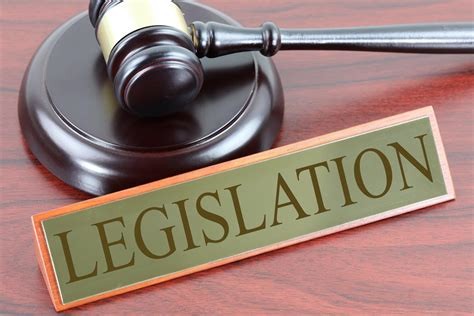
Stricter Legislation | Driving Change in Accessibility Standards
The push for web accessibility has gained significant momentum in recent years, thanks in part to stricter legislation around the globe. These legislative changes aim to enhance the digital experience for individuals with disabilities, ensuring that they have equal access to information, services, and opportunities online. One of the key pieces of legislation influencing this shift is the European Accessibility Act (EAA), established to facilitate access to various digital platforms across the European Union. The EAA mandates that certain websites and mobile applications must meet specific accessibility standards, placing an obligation on organizations to improve their online offerings.
In tandem with the EAA, updates to the Americans with Disabilities Act (ADA) in the United States are also driving change. The ADA has undergone amendments that extend its reach to the digital realm, particularly with respect to public accommodations. As a result, organizations must now consider web accessibility as an integral facet of their compliance strategies. This evolving legal landscape emphasizes that failure to adhere to accessibility requirements can result in legal repercussions and damage to an organization’s reputation.
These legislative pressures have prompted many businesses and institutions to reassess their digital platforms. Organizations are increasingly investing in accessibility audits, retraining staff, and enhancing their digital interfaces to conform to established standards. The heightened focus on compliant design not only meets legal obligations but also fosters an inclusive environment that enhances user engagement. As society trends towards greater web accessibility, it is essential for organizations to recognize that adhering to these stricter legislation is not merely a legal requirement, but a crucial aspect of responsible digital citizenship.
Actionable Steps for Businesses to Stay Compliant
As digital landscapes evolve, businesses must prioritize web accessibility to comply with emerging standards and regulations. To effectively navigate these changes, organizations should adopt a proactive approach. Conducting regular digital audits is a critical first step. These audits will help identify accessibility barriers within websites and applications, and businesses can then implement necessary modifications to enhance user experience for individuals with disabilities.
Another essential action is to partner with accessibility experts. Collaborating with professionals who specialize in web accessibility ensures that best practices are applied throughout the design and development processes. Accessibility experts can conduct thorough evaluations and provide tailored recommendations, empowering businesses to create inclusive digital environments while minimizing compliance risks. This partnership not only aids in meeting current standards but also prepares organizations for any future regulatory changes.
Additionally, transparency in documenting accessibility initiatives is vital for maintaining compliance and cultivating trust with users. Businesses should create a comprehensive record of their accessibility efforts, including developments, challenges, and updates. Publicly sharing this information demonstrates a commitment to inclusivity and can serve as a valuable resource for stakeholders and regulators alike. Establishing an open dialogue with users about accessibility features gives them a voice and encourages feedback, facilitating continuous improvement.
Furthermore, training staff on accessibility principles is crucial. Employees should understand the significance of inclusivity and be equipped with the skills necessary to implement accessibility features effectively. Regular workshops or training sessions can accelerate the acquisition of this knowledge.
By taking these actionable steps—conducting digital audits, partnering with accessibility experts, documenting efforts transparently, and educating staff—businesses can stay compliant with evolving accessibility standards and ensure a more inclusive digital experience for all users.
Try Our Free Website Accessibility Scanner
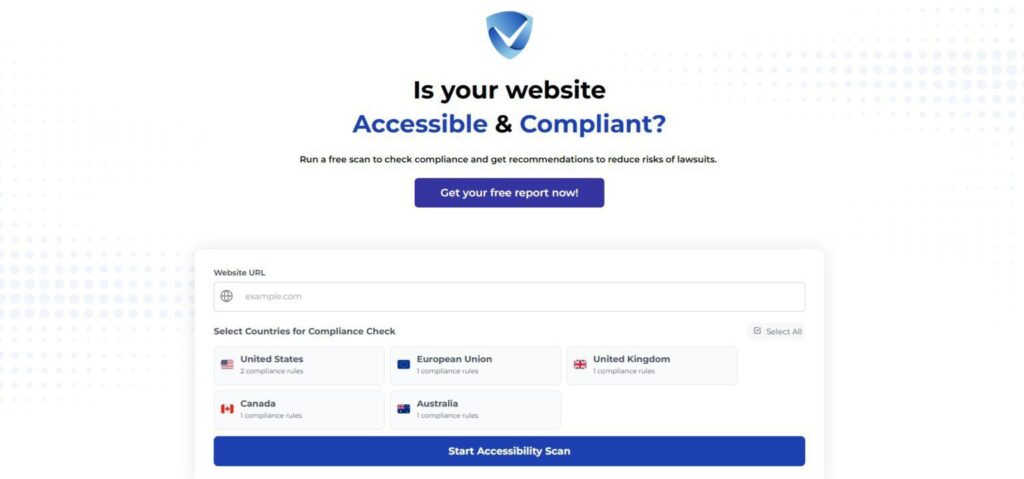
As we look towards 2025 and beyond, it becomes increasingly clear that embracing the trends in web accessibility will play a pivotal role in shaping our digital landscape. The importance of creating an inclusive online environment cannot be overstated, as it is essential for fostering innovation and ensuring that everyone has equitable access to information and services. With the rapid advancements in technology, such as artificial intelligence and machine learning, the potential for improving web accessibility is greater than ever. These innovations can streamline processes and enhance user experiences for individuals with disabilities.
Compliance with accessibility standards is no longer merely a legal obligation; rather, it serves as a powerful catalyst for organizations striving for excellence. Companies that prioritize accessibility are likely to experience a surge in user engagement, reputation enhancement, and increased market reach. This trend is underscored by a growing recognition that diverse user bases are not only beneficial from a corporate social responsibility perspective but also from a business standpoint. Thus, integrating web accessibility into the development process will set organizations apart in a competitive digital marketplace.
Moreover, the collective commitment to creating more inclusive online spaces can yield significant societal benefits. It empowers individuals with disabilities, making information and services more readily available, which in turn promotes independence and participation in various aspects of life. As we prepare for the future, it is vital to remember that web accessibility is not a one-time initiative but an ongoing process that evolves with emerging technologies and user needs. Hence, organizations must stay proactive and adaptable, ensuring their digital offerings are not just accessible but also user-friendly and engaging for all.



